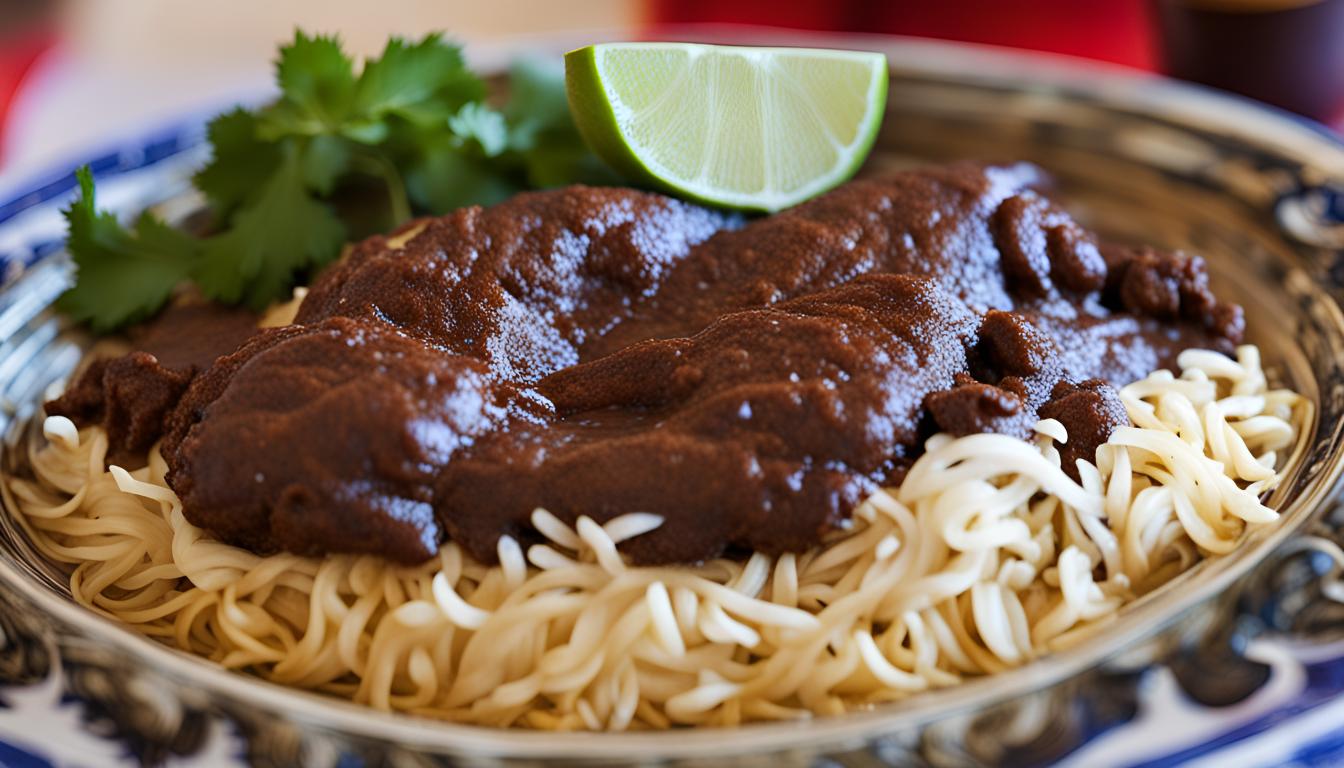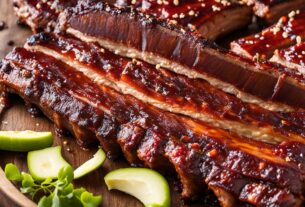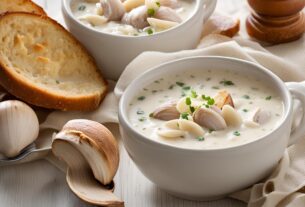Unveiling the Richness of Chicken Mole: A Journey through Mexican Cuisine
Chicken Mole (pronounced mo-lay) stands as a revered icon of Mexican culinary heritage, celebrated for its complex flavors, deep history, and cultural significance. Originating from the indigenous cuisines of Mexico, this dish has evolved over centuries into various regional interpretations, each showcasing a unique blend of ingredients and techniques. In this extensive exploration, we will uncover the origins, ingredients, preparation methods, cultural context, and practical tips for mastering Chicken Mole in your own kitchen.
Historical Origins and Evolution
The origins of Chicken Mole can be traced back to pre-Columbian Mexico, where indigenous civilizations such as the Aztecs and Maya cultivated a rich culinary tradition based on maize (corn), beans, chili peppers, and chocolate. Mole derives its name from the Nahuatl word “mōlli,” which means sauce or concoction, reflecting its diverse and flavorful composition.
One of the most famous varieties, Mole Poblano, originated in the colonial city of Puebla, Mexico. According to legend, Mole Poblano was created by nuns at the Convent of Santa Rosa in the 17th century. They combined indigenous ingredients with Spanish influences, including nuts, spices, chili peppers, and chocolate, to create a sauce that complemented turkey—a dish that eventually transformed into today’s Chicken Mole.
Since then, Chicken Mole has become a cornerstone of Mexican cuisine, evolving into numerous regional variations across Mexico. Each version reflects local ingredients and culinary traditions, highlighting the diversity and depth of Mexican gastronomy.
Essential Ingredients for Chicken Mole
Chicken Mole is characterized by its rich, velvety sauce that combines sweet, savory, spicy, and smoky flavors. While ingredients can vary based on regional preferences, some essential components include:
For Mole Sauce:
– Dried Chili Peppers: Ancho, pasilla, mulato, and/or guajillo peppers provide depth, flavor, and mild heat to the sauce. They are toasted and rehydrated before blending.
– Tomatoes: Fresh tomatoes or tomato puree add sweetness and acidity to balance the richness of the sauce.
– Onions and Garlic: Sauteed until caramelized to provide a savory base for the sauce.
– Nuts and Seeds: Almonds, peanuts, sesame seeds, and/or pumpkin seeds (pepitas) contribute to the sauce’s texture and nutty flavor.
– Spices: Cinnamon, cloves, cumin, coriander, oregano, and black pepper add aromatic complexity.
– Chocolate: Mexican chocolate (which includes sugar and cinnamon) or unsweetened cocoa adds richness and a hint of bitterness to the sauce.
– Chicken Broth: Provides depth of flavor and helps achieve the desired consistency of the sauce.
– Sweeteners: Plantains, raisins, or sugar (piloncillo) are sometimes added to balance the heat of the chili peppers and acidity of the tomatoes.
For Chicken:
– Chicken: Bone-in, skin-on chicken pieces such as thighs and drumsticks are commonly used for their flavor and tenderness.
– Salt and Pepper: Seasoning to taste before cooking.
Cooking Techniques for Chicken Mole
Preparing Chicken Mole involves several steps to ensure the sauce is rich, flavorful, and well-balanced. Here’s a detailed guide to mastering Chicken Mole:

Step 1: Prepare the Mole Sauce
1. Prepare Dried Chilies: Remove stems and seeds from dried chili peppers. Toast them lightly in a dry skillet until fragrant, being careful not to burn them. Submerge in hot water to rehydrate for about 20-30 minutes.
2. Blend the Sauce: In a blender or food processor, combine rehydrated chili peppers (drained), tomatoes, onions, garlic, nuts (almonds, peanuts), seeds (sesame seeds, pepitas), spices (cinnamon, cloves, cumin, coriander, oregano, black pepper), and a small piece of Mexican chocolate or cocoa powder. Add some chicken broth to facilitate blending and achieve a smooth paste-like consistency.
3. Cook the Sauce: Heat a large pot or Dutch oven over medium heat. Add a small amount of oil and pour in the blended sauce. Cook, stirring frequently, until the sauce thickens and darkens in color, about 15-20 minutes.
4. Simmer the Sauce: Gradually add more chicken broth to the sauce, stirring to incorporate and achieve a velvety texture. Simmer over low heat for at least 30 minutes to allow flavors to meld together. Season with salt and sugar to taste, adjusting the sweetness and spiciness as desired.
Step 2: Prepare the Chicken
1. Season and Brown Chicken: Season chicken pieces with salt and pepper. In a separate skillet, heat oil over medium-high heat. Brown the chicken pieces on all sides until golden brown, about 5-7 minutes per side. Remove from skillet and set aside.
2. Combine Chicken and Sauce: Add the browned chicken pieces to the simmering Mole sauce. Ensure each piece is coated with the sauce.
3. Simmer Chicken: Cover the pot or Dutch oven and simmer over low heat until the chicken is cooked through and tender, about 30-40 minutes. Stir occasionally to prevent sticking and ensure even cooking.
Step 3: Serve Chicken Mole
1. Serve Hot: Once the chicken is cooked through and tender, remove from heat. Allow the Chicken Mole to rest for a few minutes before serving.
2. Garnish and Accompaniments: Serve Chicken Mole hot, accompanied by steamed rice or warm tortillas. Garnish with sesame seeds, chopped cilantro, and additional slices of Mexican chocolate (if desired) for presentation and added flavor.
Cultural Significance of Chicken Mole
Chicken Mole holds significant cultural importance as a symbol of Mexico’s culinary heritage and diversity. It reflects the blending of indigenous, Spanish, and other global influences that have shaped Mexican cuisine over centuries. Mole sauces vary widely across regions and families, each with its unique combination of ingredients and preparation methods passed down through generations.
In Mexican culture, preparing Chicken Mole is often a labor-intensive process that brings families and communities together during festive occasions and celebrations. It is commonly served during weddings, birthdays, and religious holidays, symbolizing hospitality, generosity, and cultural pride.
Tips for Perfecting Chicken Mole at Home
To achieve authentic and flavorful Chicken Mole at home, consider the following tips:
– Toast Dried Chilies Carefully: Toast dried chili peppers over low heat to release their flavors without burning them, as this can impart a bitter taste to the sauce.
– Blend Sauce Smoothly: Blend the Mole sauce ingredients thoroughly until smooth and well incorporated. Strain the sauce if a smoother consistency is desired.
– Adjust Sweetness and Heat: Taste the Mole sauce as it cooks and adjust the sweetness with sugar or piloncillo and the heat with additional chili peppers or spices to suit your preference.
– Use Quality Ingredients: Opt for high-quality dried chili peppers, Mexican chocolate, and fresh spices to enhance the depth and complexity of flavors in the Chicken Mole.
– Allow Flavors to Develop: Let the Chicken Mole simmer over low heat for an extended period to allow the flavors to meld together and develop a rich, nuanced taste.
Conclusion
Chicken Mole stands as a testament to Mexico’s culinary creativity and cultural diversity, embodying the country’s vibrant flavors and rich history. Its evolution from ancient indigenous traditions to modern-day interpretations reflects Mexico’s ability to preserve culinary heritage while embracing innovation and adaptation.
By exploring the intricacies of Chicken Mole—from its historical roots to its essential ingredients and cooking techniques—you embark on a culinary journey that celebrates Mexico’s cultural identity and culinary craftsmanship. Whether preparing it for a special occasion or a family gathering, Chicken Mole invites you to savor the complex flavors and timeless traditions that define Mexican cuisine.
Through this comprehensive guide, you are equipped with the knowledge and skills to recreate Chicken Mole with authenticity and flair, ensuring a memorable dining experience that honors tradition while embracing your own creative expression. Embrace the art of Mexican cooking, and indulge in the pleasure of sharing delicious food and cultural heritage with those around you.
In conclusion




